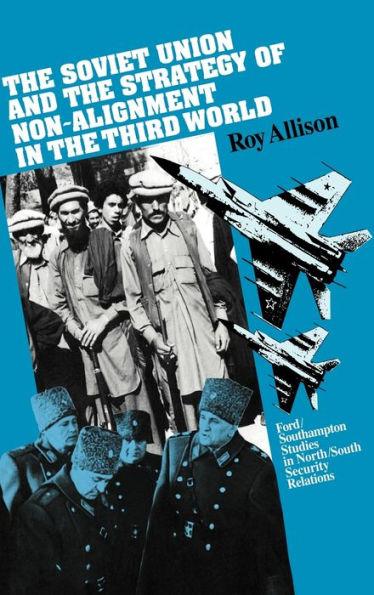The Soviet Union and the Strategy of Non-Alignment in the Third World
In a survey of Soviet attitudes toward the large group of Third World countries outside the primary alliances, generally referred to as the non-aligned states, the book assesses the policy implications of Soviet views on neutrality, non-alignment, the Non-Aligned Movement, neutralization, and alignment in the Third World. A primary intention is to consider how far Soviet leaders have accepted the independent foreign policy aspirations of non-aligned states and to explain the purposes behind Soviet encouragement for the status or strategy of non-alignment in the 1970s and 1980s. The study questions whether Soviet leaders are able or willing to accept non-alignment or neutrality as an intermediate status between the Eastern and Western blocs in international affairs. The Soviet view of the collective agenda of the non-aligned states on international security issues is analyzed, and the topical question of how the USSR understands military alignment and the primary North/South military relationship is examined.
"1000560336"
The Soviet Union and the Strategy of Non-Alignment in the Third World
In a survey of Soviet attitudes toward the large group of Third World countries outside the primary alliances, generally referred to as the non-aligned states, the book assesses the policy implications of Soviet views on neutrality, non-alignment, the Non-Aligned Movement, neutralization, and alignment in the Third World. A primary intention is to consider how far Soviet leaders have accepted the independent foreign policy aspirations of non-aligned states and to explain the purposes behind Soviet encouragement for the status or strategy of non-alignment in the 1970s and 1980s. The study questions whether Soviet leaders are able or willing to accept non-alignment or neutrality as an intermediate status between the Eastern and Western blocs in international affairs. The Soviet view of the collective agenda of the non-aligned states on international security issues is analyzed, and the topical question of how the USSR understands military alignment and the primary North/South military relationship is examined.
141.0
In Stock
5
1

The Soviet Union and the Strategy of Non-Alignment in the Third World
308
The Soviet Union and the Strategy of Non-Alignment in the Third World
308
141.0
In Stock

Product Details
| ISBN-13: | 9780521355117 |
|---|---|
| Publisher: | Cambridge University Press |
| Publication date: | 12/15/1988 |
| Series: | Ford/Southampton Studies in North/South Security Relations |
| Pages: | 308 |
| Product dimensions: | 6.26(w) x 9.29(h) x 0.94(d) |
From the B&N Reads Blog
